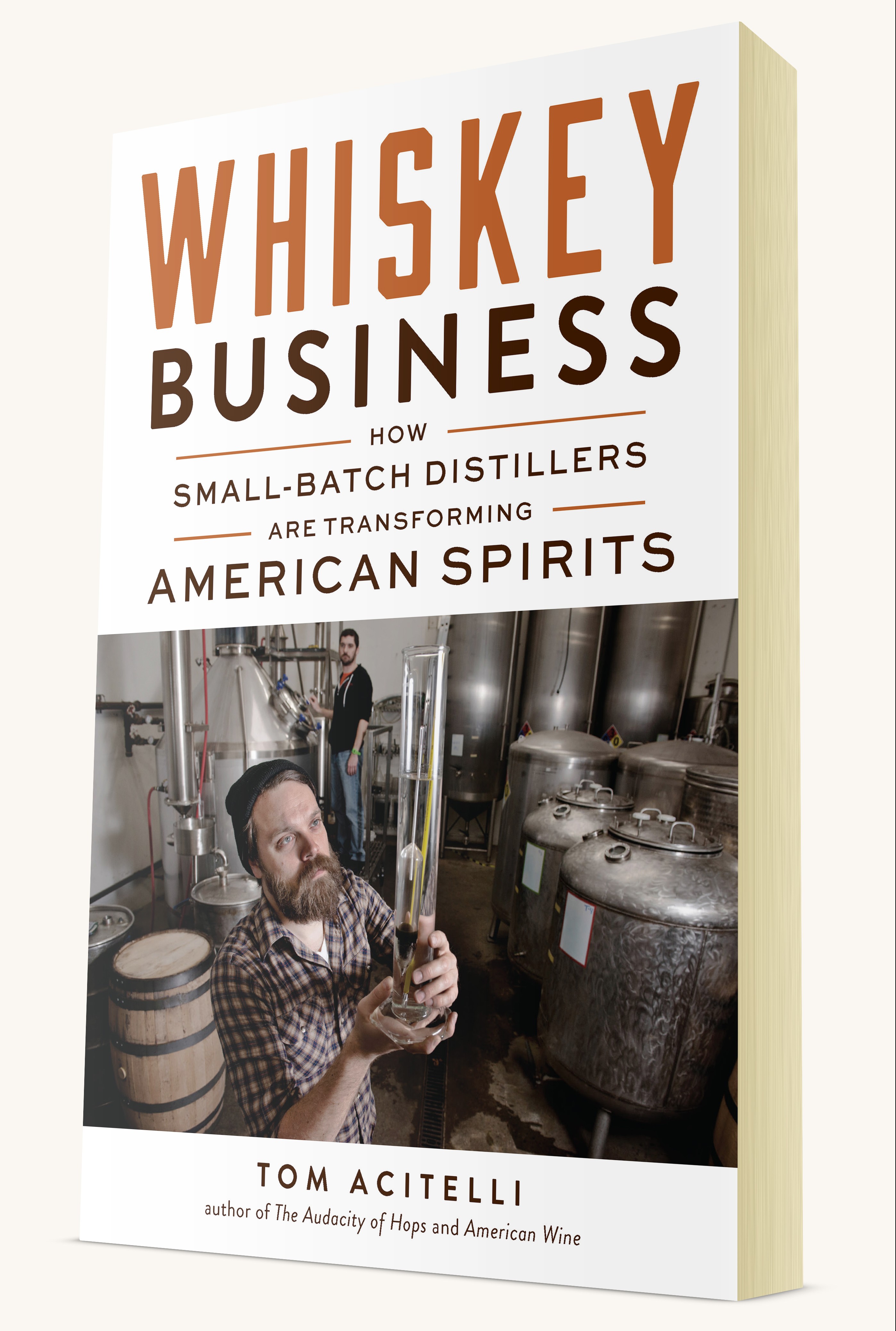
The return of warm weather means backyard barbecues, picnics in the park and porch-drinking your favorite wine, beer and spirits with friends and family. Just in time for summer, Chicago Review Press’s forthcoming book Whiskey Business: How Small-Batch Distillers Are Transforming American Spirits by Tom Acitelli explores the underdog story behind the rise of small-batch distilling in America and explains the relationship between Americans and spirits such as bourbon, scotch, vodka, gin and rum. Tom Acitelli shares the full story of a plucky brand of entrepreneurs who disrupted the nation’s conception of how those libations could appear and taste—and how much they could cost. Whiskey Business is the first history of American craft spirits and is a must-read for spirits enthusiasts everywhere.
Author Tom Acitelli answers our questions below.
For readers who aren’t familiar with small-batch distillers in America, can you describe the movement?
It’s one of the more interesting and impactful culinary movements in the United States in the past half-century. Smaller, independent startups, often working in obscurity at first and usually on razor-thin margins, have disrupted the way whiskey, vodka, gin, brandy, etc., are produced, marketed and sold in the United States—and in the world now.
My book is the story of this disruption. It starts in an isolated area of Kentucky, and then moves to an equally isolated area of California, and then ends covering the continent and much of the world.
What was the research process like when you started working on Whiskey Business? Were you already familiar with most of the distilleries and breweries that are mentioned in the book?
I was familiar with spirits, distillation, etc., but not with individual producers. It was truly illuminating to dig deeper and deeper to discover what made these pioneers tick and what made some of them so influential. I am very happy to have been the first author to tell their history—the history of small-batch American spirits.
It’s the story of underdog triumph and who doesn’t like a tale like that?
As for breweries, I was very familiar with those and the people behind them because of a previous book, The Audacity of Hops: The History of America’s Craft Beer Revolution, now out in a majorly expanded and updated second edition.
Throughout Whiskey Business you also touch on other major trends, such as America’s renewed interest in cocktails, the twin rises of craft beer and fine wine, and neo-Prohibitionism that nearly ended the entire movement. Why do you think America has rediscovered cocktails?
Thank Matthew Weiner. The Mad Men series he created turned on a lot of bartenders, critics and consumers to the joys of classic cocktails. Or at least boosted a trend that was already warming up thanks to hospitality pioneers such as the late Sasha Pestraske, whose Milk & Honey in Manhattan did so much to revive not just cocktails but cocktail culture.
And that’s important: It’s one thing to learn to make the perfect old fashioned, it’s another to know how and when to enjoy it. I think what’s happening with cocktails is what happened with craft beer about 20 years ago: the emergence of a culture around it. And small-batch spirits are a part of that.
What was your favorite part about researching and writing Whiskey Business?
Well, aside from the sampling, it was great to get to know some of the pioneers behind the small-batch spirits movement and to learn how it intertwined with fine wine and craft beer, which I’ve also written about and done a lot of research into.
What do you see in the future for the small-batch distilling movement? Do you think its popularity is here to stay?
Definitely. Though it does face a definitional challenge that I go into quite a bit in Whiskey Business. For every bona fide distiller or blender, there is at least one phantom or faux distillery—essentially places that buy product in bulk, bottle it, slap a quaint label on it, and sell it as “craft” or “small-batch.” And it’s impossible for new consumers to tell the difference a lot of times!
The genuine articles risk getting swamped in this environment, I think, to the point where the whole thing gets co-opted.
Put it this way: a consumer who gets burned buying a faux small-batch bottle of $40 bourbon that tastes no better than a less expensive, mass-produced brand is probably not going to buy another such bottle—and that consumer’s lost for good.
Plus, there are plenty of mass producers that do distill smaller batches of fantastic spirits. Where do they fit in? How much does taste and craftsmanship play in to what we call small-batch spirits? Or is it only about the size of the distilleries and their output?
So, yes, I think the small-batch distilling movement is here to stay. It’s just got to sort itself out. It’s still early days—things only really picked up in the past 15 years or so—which made researching this so novel and interesting. I hope Whiskey Business, in fact, adds to the debate over what constitutes a “small-batch” or “craft” spirit.
In this book, you include stories of entrepreneurs who changed how we think libations should look and taste, as well as how much they should cost. Is there a story you particularly enjoy?
 I love the story of how Bill Samuels Jr. got the Wall Street Journal to cover Maker’s Mark in 1980.
I love the story of how Bill Samuels Jr. got the Wall Street Journal to cover Maker’s Mark in 1980.
Bourbon in general was tanking by then—blame a generational shift, or the rise of fine wine, or the introduction of Absolut vodka the year before, or the rise beer production (which would peak in 1982). Maker’s Mark, the then-small Kentucky distillery that Samuels’s father had founded, was desperate.
And, through machinations worthy of John Le Carre, Samuels Jr. got a reporter from the Wall Street Journal, in Louisville to cover a health insurance convention of all things, to tour the Maker’s Mark distillery for two days in tiny Loretto.
The ensuing front-page rave was a watershed for small-batch spirits in the United States, I believe. Its impact had never been fully explored, and I do that in Whiskey Business. The book is full of firsts. I’m proud of that.
Tom Acitelli, a 2016 James Beard Award finalist who has written about alcohol for the Wall Street Journal, the Washington Post, and Bloomberg View, has written the acclaimed histories of beer and wine, The Audacity of Hops and American Wine.
Whiskey Business: How Small-Batch Distillers Are Transforming American Spirits by Tom Acitelli arrived on shelves June 1, 2017 and is available wherever books and e-books are sold.
[Get it now $27] [Request a review copy]
No Comments
No comments yet.